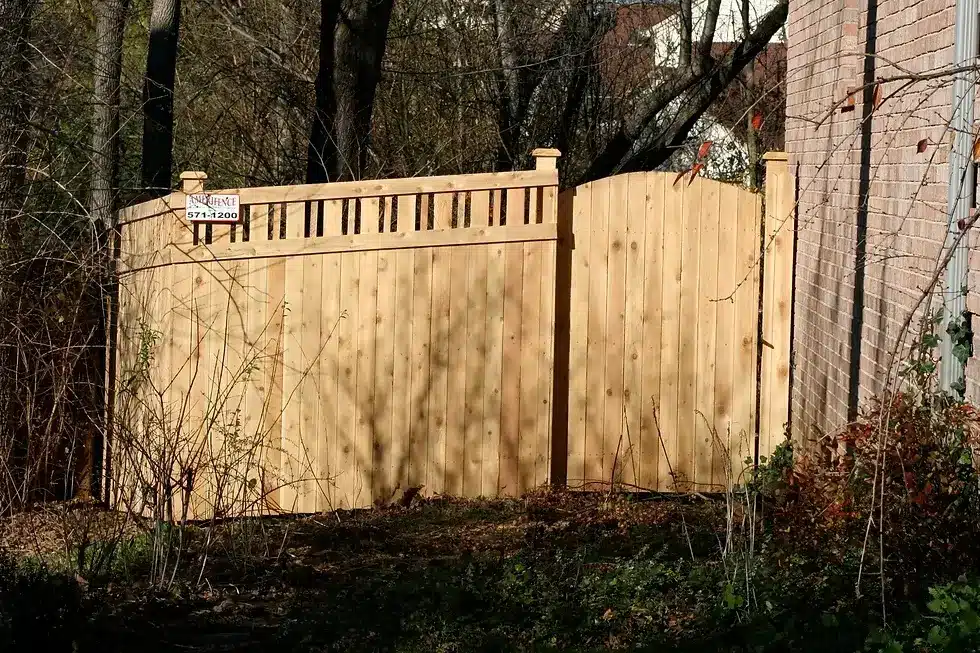Step-by-Step Guide to Setting Up a Timber Fence for Your Home or Building
Mounting a timber fence can considerably enhance both the capability and visual appeal of your residential property. Comprehending these actions not only ensures a durable setup but likewise adds to lasting fulfillment.
Preparation Your Fence Installation
When getting started on the installment of a timber fence, careful preparation is vital to make sure a successful result. Begin by examining the function of the fencing-- whether it is for privacy, security, or aesthetics-- considering that this will affect the layout and format. Next, review the residential or commercial property lines, taking treatment to verify the borders with a study or title deed to avoid disputes with next-door neighbors.
Think about local zoning homeowners and regulations' organization standards, as these might determine fence elevation, style, and materials. It is recommended to acquire the essential licenses before starting work, as this can protect against legal complications later on.
In addition, consider the terrain and dirt conditions of your building. Irregular ground might call for additional adjustments throughout setup, while rough dirt may require specialized tools.
Finally, produce a comprehensive strategy that consists of dimensions, the variety of posts, and the spacing in between them. A clear design will help with the setup procedure and ensure that you have all needed materials handy. By sticking to these preparation steps, you can establish a strong structure for a successful timber fencing setup.
Picking the Right Materials
Selecting the proper materials for your timber fencing is critical to guaranteeing longevity and aesthetic appeal. The most typical kinds of timber made use of for fencing include cedar, redwood, and pressure-treated yearn.
Pressure-treated pine is another popular choice, as it is typically more budget-friendly. Nonetheless, it requires regular upkeep and treatment to prolong its life expectancy. When picking wood, take into consideration the environment of your area; as an example, areas with high moisture might profit from wood types with better resistance to wetness.
Additionally, you must examine the fencing style and function. A picket fence might call for different material specifications contrasted to a privacy fencing. Opt for thicker boards for architectural integrity, particularly in high-wind areas. Take into consideration the coating; without treatment timber may call for staining or sealing to safeguard versus climate elements. By thoroughly picking your products, you can ensure that your timber fence will certainly stand the test of time while enhancing your home's landscape.
Preparing the Installment Website

Preparing the installation site is a vital step in guaranteeing the effective building of your wood fencing. Appropriate prep work not just assists in a smoother installation process but also adds to the long life and security of the fence.

If your website has uneven ground, think about leveling it or changing your fence layout appropriately. This is essential to stop damages throughout setup and make certain safety and security.
Setting Up the Fencing Articles

Next, dig holes for each post, ensuring they are deep enough-- normally one-third the height of the blog post above ground-- to offer stability. A deepness of at the very least 2 feet is suggested for many fencings. The size of the holes ought to be approximately three times the size of the blog posts.
As soon as your openings prepare, location each article upright into the assigned opening. Make use of a degree to guarantee they are plumb, changing as needed. After positioning, load the openings with concrete mix or jam-packed soil for added support. Permit the concrete to treat according to the producer's directions, generally 24 to 2 days. Appropriately installed blog posts are vital for keeping the structural honesty of the fence, ensuring it continues to be upright and safe and secure against ecological stress and anxieties.

Including Fence Panels and Completing Touches
Once the fencing posts are safely set, the next step entails affixing the fencing panels, which will define the limits of your property. Begin by placing each panel in Related Site between the posts, ensuring they are degree and lined up.
After all panels are affixed, examine the whole fence for any misalignments or spaces. Make adjustments as needed to ensure an uniform look.
Furthermore, using a protective stain or sealant will improve the wood's resilience against climate components, prolonging the life of your fence. With these steps, your wood fencing will not only offer its function efficiently yet likewise enhance the total allure of Your Domain Name your home.
Verdict
In verdict, the effective setup of a timber fence calls for careful preparation, option of suitable materials, comprehensive website preparation, and exact execution of installation techniques. Appropriate maintenance post-installation additionally extends the life and look of the timber fence.
When getting started on the installment of a wood fence, cautious planning is vital to make sure a successful end result.Picking the ideal materials for your wood fencing is important to making sure sturdiness and aesthetic allure. A picket fencing may call for different material specs contrasted to a privacy fence.With the setup site properly prepared, the following step entails setting the fencing articles, which serve as the backbone of your timber fencing.When the fence posts are firmly set, the following step includes attaching the fence panels, which will define the limits of your building.